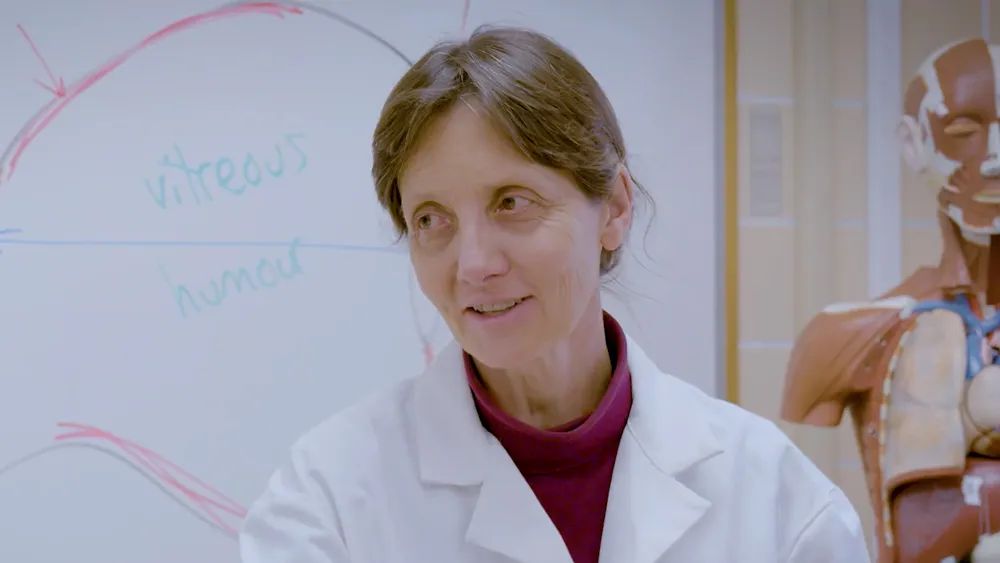Heading 1
Heading 2
Heading 3
Heading 4
Heading 5
Heading 6
Lorem ipsum dolor sit amet, consectetur adipiscing elit, sed do eiusmod tempor incididunt ut labore et dolore magna aliqua. Ut enim ad minim veniam, quis nostrud exercitation ullamco laboris nisi ut aliquip ex ea commodo consequat. Duis aute irure dolor in reprehenderit in voluptate velit esse cillum dolore eu fugiat nulla pariatur.
Block quote
Ordered list
- Item 1
- Item 2
- Item 3
Unordered list
- Item A
- Item B
- Item C
Bold text
Emphasis
Superscript
Subscript
About This Simulation
From explosions to color changes, discover some of the amazing ways alkenes act as the starting point of countless reactions in organic chemistry. Learn about the structural characteristics and classification of alkenes as you observe how they transform major organic compounds.
Learning Objectives
- Recognize and classify alkenes
- Predict and draw the product of some basic reactions of alkenes
About This Simulation
Lab Techniques
Related Standards
- US College Year 2
- US College Year 3
Learn More About This Simulation
In this simulation, you will learn the structures and reactions of alkenes and how they can affect the world around us. Getting to know the alkenes Before jumping into the exciting reactions that alkenes help create, you must first get to know their structure. You will learn and answer questions about key topics, including the elements and bonds present in the structure of alkenes. Understand the difference between alkenes and alkanes, cis and trans alkenes, and cyclic and acyclic alkenes. Alkene reactions After classifying the types of alkenes, apply this new knowledge to help you understand alkene reactivity. This simulation covers a range of common reactions, from halogenation and reduction to hydration and oxidation. Here you’ll experience the many benefits of a virtual lab, including on-screen activities and a holotable for 3D molecules! A 3D representation of the oxymercuration hydration reaction, for example, will help you understand the step-by-step process and better visualize the transformation from an alkene to the hydration product. Oxidation reactions Complete the oxidation reaction schemes with a fill-in-the-blanks activity, identifying the intermediate structures for epoxidation, oxidative cleavage and hydroxylation of alkenes. Throughout the simulation, quiz questions till appear to help you test your understanding of reaction schemes. Good luck!
For Science Programs Providing a Learning Advantage
Boost STEM Pass Rates
Boost Learning with Fun
75% of students show high engagement and improved grades with Labster
Discover Simulations That Match Your Syllabus
Easily bolster your learning objectives with relevant, interactive content
Place Students in the Shoes of Real Scientists
Practice a lab procedure or visualize theory through narrative-driven scenarios


FAQs
Find answers to frequently asked questions.
Heading 1
Heading 2
Heading 3
Heading 4
Heading 5
Heading 6
Lorem ipsum dolor sit amet, consectetur adipiscing elit, sed do eiusmod tempor incididunt ut labore et dolore magna aliqua. Ut enim ad minim veniam, quis nostrud exercitation ullamco laboris nisi ut aliquip ex ea commodo consequat. Duis aute irure dolor in reprehenderit in voluptate velit esse cillum dolore eu fugiat nulla pariatur.
Block quote
Ordered list
- Item 1
- Item 2
- Item 3
Unordered list
- Item A
- Item B
- Item C
Bold text
Emphasis
Superscript
Subscript
A Labster virtual lab is an interactive, multimedia assignment that students access right from their computers. Many Labster virtual labs prepare students for success in college by introducing foundational knowledge using multimedia visualizations that make it easier to understand complex concepts. Other Labster virtual labs prepare learners for careers in STEM labs by giving them realistic practice on lab techniques and procedures.
Labster’s virtual lab simulations are created by scientists and designed to maximize engagement and interactivity. Unlike watching a video or reading a textbook, Labster virtual labs are interactive. To make progress, students must think critically and solve a real-world problem. We believe that learning by doing makes STEM stick.
Yes, Labster is compatible with all major LMS (Learning Management Systems) including Blackboard, Canvas, D2L, Moodle, and many others. Students can access Labster like any other assignment. If your institution does not choose an LMS integration, students will log into Labster’s Course Manager once they have an account created. Your institution will decide which is the best access method.
Labster is available for purchase by instructors, faculty, and administrators at education institutions. Purchasing our starter package, Labster Explorer, can be done using a credit card if you are located in the USA, Canada, or Mexico. If you are outside of North America or are choosing a higher plan, please speak with a Labster sales representative. Compare plans.
Labster supports a wide range of STEM courses at the high school, college, and university level across fields in biology, chemistry, physics, and health sciences. You can identify topics for your courses by searching our Content Catalog.
.png?fm=jpg)





.png?fm=jpg&w=700&h=400)
.png?fm=jpg&w=700&h=400)
.png?fm=jpg&w=700&h=400)
.png?fm=jpg&w=700&h=400)





